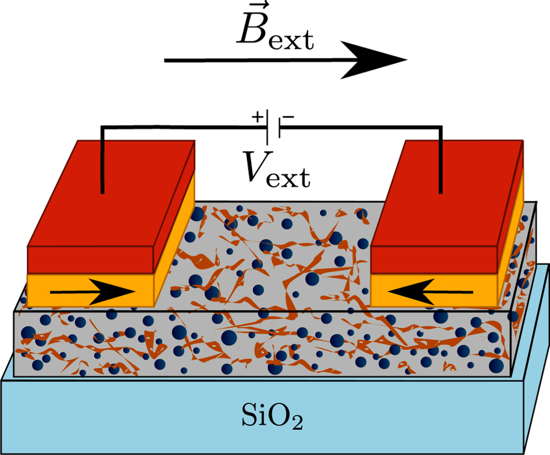Tunable Room-Temperature Ferromagnet
Using iron-oxide and graphene oxide nanocomposite
By Francis Pelletier | July 6, 2015 at 2:24 pmNature, Scientific Reports has published an article written by Aigu L. Lin, NUS Graduate School of Integrative Sciences and Engineering, National University of Singapore, 28 Medical Drive, Singapore 117456 – Centre for Advanced 2D Materials and Graphene Research Centre, Faculty of Science, National University of Singapore, 6 Science Drive 2, Singapore 117546 – Department of Physics, Faculty of Science, National University of Singapore, 2 Science Drive 3, Singapore 117542, J. N. B. Rodrigues, Chenliang Su, Centre for Advanced 2D Materials and Graphene Research Centre, Faculty of Science, National University of Singapore, 6 Science Drive 2, Singapore 117546 – Department of Chemistry, Faculty of Science, National University of Singapore, 3 Science Drive 3, Singapore 117543, M. Milletari, Centre for Advanced 2D Materials and Graphene Research Centre, Faculty of Science, National University of Singapore, 6 Science Drive 2, Singapore 117546 – Department of Physics, Faculty of Science, National University of Singapore, 2 Science Drive 3, Singapore 117542, Kian Ping Loh, Centre for Advanced 2D Materials and Graphene Research Centre, Faculty of Science, National University of Singapore, 6 Science Drive 2, Singapore 117546 – Department of Chemistry, Faculty of Science, National University of Singapore, 3 Science Drive 3, Singapore 117543, Tom Wu, Materials Science and Engineering, King Abdullah University of Science and Technology (KAUST), Thuwal, 23955-6900, Saudi Arabia, Wei Chen, Centre for Advanced 2D Materials and Graphene Research Centre, Faculty of Science, National University of Singapore, 6 Science Drive 2, Singapore 117546 – Department of Chemistry, Faculty of Science, National University of Singapore, 3 Science Drive 3, Singapore 117543, A. H. Castro Neto, Centre for Advanced 2D Materials and Graphene Research Centre, Faculty of Science, National University of Singapore, 6 Science Drive 2, Singapore 117546 – Department of Physics, Faculty of Science, National University of Singapore, 2 Science Drive 3, Singapore 117542, Shaffique Adam Centre for Advanced 2D Materials and Graphene Research Centre, Faculty of Science, National University of Singapore, 6 Science Drive 2, Singapore 117546 – Department of Physics, Faculty of Science, National University of Singapore, 2 Science Drive 3, Singapore 117542 – Yale-NUS College, 16 College Ave West, Singapore 138527, and Andrew T. S. Wee, NUS Graduate School of Integrative Sciences and Engineering, National University of Singapore,28 Medical Drive, Singapore 117456 – Centre for Advanced 2D Materials and Graphene Research Centre, Faculty of Science, National University of Singapore, 6 Science Drive 2, Singapore 117546 – Department of Physics, Faculty of Science, National University of Singapore, 2 Science Drive 3, Singapore 117542.
The gray box represents the nanocomposite, with the blue spheres
representing the iron-oxide nanoparticles and the brown strips
representing the highly defective graphene oxide layers.
The nanocomposite’s thin film is deposited on top of a silicon dioxide substrate (in light blue). Two cobalt ferromagnetic electrodes (yellow) are placed on top of the nanocomposite. For zero applied magnetic field, these are pinned in an anti-parallel configuration by PtMn layers (in red).
Abstract : “Magnetic materials have found wide application ranging from electronics and memories to medicine. Essential to these advances is the control of the magnetic order. To date, most room-temperature applications have a fixed magnetic moment whose orientation is manipulated for functionality. Here we demonstrate an iron-oxide and graphene oxide nanocomposite based device that acts as a tunable ferromagnet at room temperature. Not only can we tune its transition temperature in a wide range of temperatures around room temperature, but the magnetization can also be tuned from zero to 0.011 A m2/kg through an initialization process with two readily accessible knobs (magnetic field and electric current), after which the system retains its magnetic properties semi-permanently until the next initialization process. We construct a theoretical model to illustrate that this tunability originates from an indirect exchange interaction mediated by spin-imbalanced electrons inside the nanocomposite.”














 Subscribe to our free daily newsletter
Subscribe to our free daily newsletter


